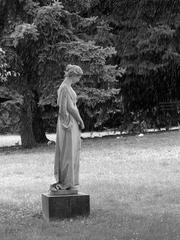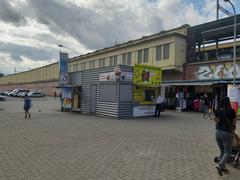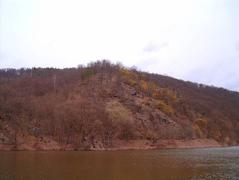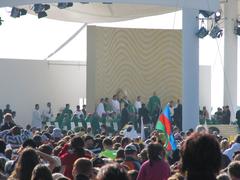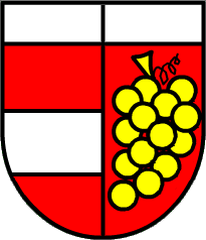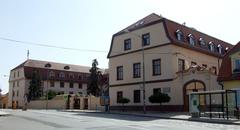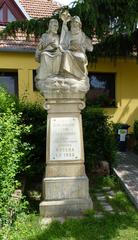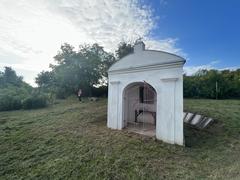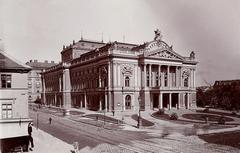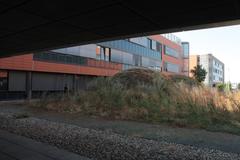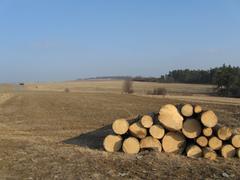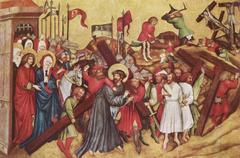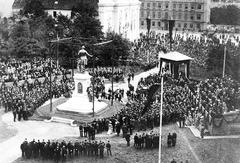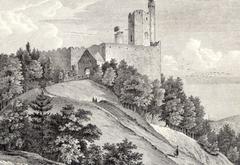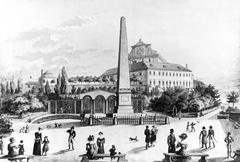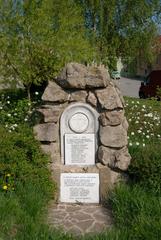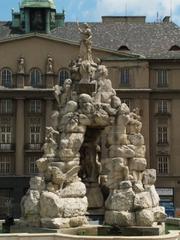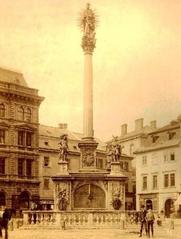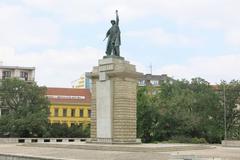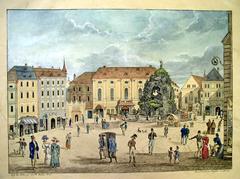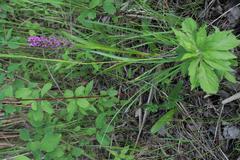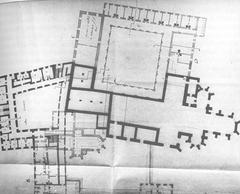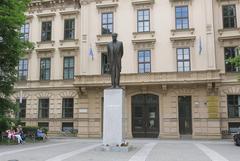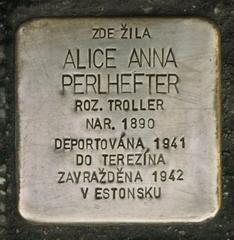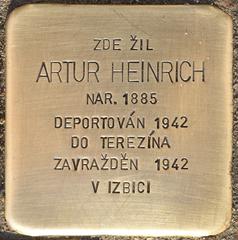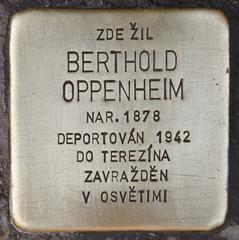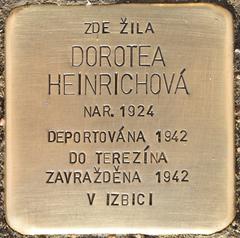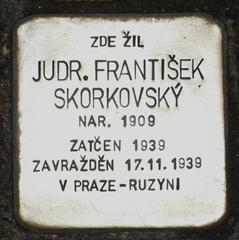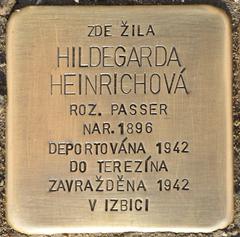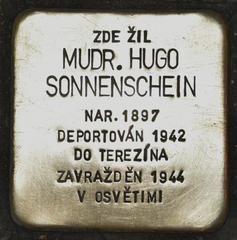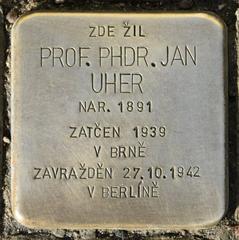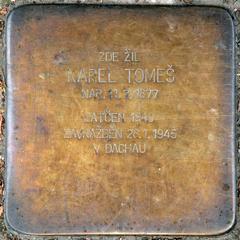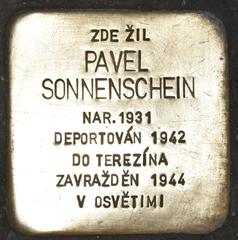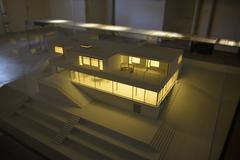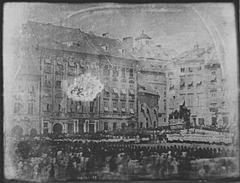
Visiting Výpustek: Hours, Tickets, and Historical Insights in Brno
Date: 23/07/2024
Introduction
Výpustek Cave, nestled in the heart of the Moravian Karst region near Brno, Czech Republic, is a site of unparalleled historical, geological, and cultural significance. This intriguing cave has served various roles throughout history, from a prehistoric shelter to a military facility during World War II and the Cold War. Today, Výpustek Cave stands as a testament to the region’s rich past, offering visitors a unique glimpse into both natural history and human endeavor. As a key attraction in the Moravian Karst, Výpustek Cave not only draws tourists but also supports ongoing archaeological and geological research. This guide aims to provide a comprehensive overview of Výpustek Cave, including its history, visitor information, travel tips, and the broader significance of this remarkable site (Moravian Museum, Czech Geological Survey, Military History Institute Prague, Czech Ministry of Defense).
Table of Contents
- Introduction
- History of Výpustek Cave
- Visitor Information
- Travel Tips
- Nearby Attractions
- Preservation and Tourism
- Archaeological Research
- Geological Significance
- Cultural Impact
- FAQ
- Conclusion
History of Výpustek Cave
Prehistoric Significance
Výpustek Cave has a history dating back to prehistoric times. Archaeological findings indicate that the cave was inhabited by humans during the Paleolithic era. Evidence of this includes stone tools and remnants of prehistoric fauna, such as bones of cave bears and other Ice Age animals. These findings suggest that the cave served as a shelter and hunting ground for early humans (Moravian Museum).
Medieval and Early Modern Periods
During the medieval period, Výpustek Cave was largely forgotten, with limited historical records indicating its use. However, by the 17th and 18th centuries, the cave began to attract attention again, primarily due to its natural beauty and geological significance. Local legends and folklore often mentioned the cave, adding to its mystique and allure.
Industrial Exploitation
The 19th century marked a significant turning point in the history of Výpustek Cave. The Industrial Revolution brought about increased interest in the cave’s mineral resources. In the mid-1800s, the cave was extensively mined for phosphate-rich guano deposits, which were used as fertilizer. This period of industrial exploitation led to significant alterations in the cave’s structure and environment (Czech Geological Survey).
Military Utilization
The strategic importance of Výpustek Cave became evident during the 20th century, particularly during World War II. The cave was utilized by the German military as an underground factory and storage facility. The extensive network of tunnels and chambers provided a secure and concealed location for manufacturing and storing military equipment. This period saw the construction of reinforced concrete structures and other modifications to the cave’s natural formations (Military History Institute Prague).
Cold War Era
Following World War II, Výpustek Cave continued to serve military purposes during the Cold War. The Czechoslovak People’s Army used the cave as a top-secret command center and nuclear fallout shelter. The cave’s natural insulation and stability made it an ideal location for such a facility. Extensive renovations were carried out, including the installation of communication systems, living quarters, and other infrastructure necessary for a fully operational military base (Czech Ministry of Defense).
Post-Cold War and Modern Era
With the end of the Cold War and the dissolution of Czechoslovakia, Výpustek Cave’s military significance diminished. In the early 1990s, the cave was decommissioned and eventually opened to the public as a historical and natural monument. Efforts were made to preserve the cave’s unique geological features and historical artifacts while also making it accessible for educational and tourism purposes (Moravian Karst).
Visitor Information
Visiting Hours and Tickets
Výpustek Cave is open to visitors year-round, with varying hours depending on the season. It is advisable to check the official website for the most current visiting hours and ticket prices. Tickets can be purchased online or at the entrance. Guided tours are available in multiple languages and are included in the ticket price.
Travel Tips
When planning a visit to Výpustek Cave, consider the following tips:
- Dress Appropriately: The cave maintains a constant temperature of around 8-10°C (46-50°F). Wear warm clothing and sturdy footwear.
- Accessibility: The cave is accessible to visitors with mobility issues, with designated pathways and facilities to accommodate wheelchairs.
- Photography: Photography is allowed inside the cave, but the use of flash is restricted to preserve the delicate formations.
Nearby Attractions
While in the Moravian Karst region, consider exploring other nearby attractions:
- Punkva Caves: Famous for their underground river and Macocha Abyss.
- Sloup-Šošůvka Caves: Known for their impressive stalactite formations.
- Brno: The nearby city offers a range of historical sites, museums, and cultural experiences.
Preservation and Tourism
Today, Výpustek Cave is a popular tourist destination, attracting visitors from around the world. The cave offers guided tours that highlight its geological formations, prehistoric significance, and historical uses. Special attention is given to the cave’s role during World War II and the Cold War, with preserved military installations and exhibits providing a glimpse into its past. The cave is also part of the larger Moravian Karst Protected Landscape Area, which is renowned for its extensive cave systems and natural beauty (Moravian Karst Protected Landscape Area).
Archaeological Research
Ongoing archaeological research continues to uncover new insights into the history of Výpustek Cave. Recent excavations have revealed additional prehistoric artifacts and evidence of early human activity. These findings contribute to our understanding of the cave’s long and varied history, from its use as a prehistoric shelter to its role in modern military history (Institute of Archaeology of the Czech Academy of Sciences).
Geological Significance
Výpustek Cave is also of great interest to geologists due to its unique karst formations. The cave features an array of stalactites, stalagmites, and other speleothems that have formed over millions of years. These formations provide valuable information about the geological history of the region and the processes that have shaped the cave’s interior. The cave’s geology is a key focus of scientific study and conservation efforts (Czech Speleological Society).
Cultural Impact
The cultural impact of Výpustek Cave extends beyond its historical and geological significance. The cave has inspired numerous works of art, literature, and folklore. It is often featured in local legends and stories, reflecting its enduring presence in the cultural consciousness of the region. The cave’s unique atmosphere and historical layers make it a fascinating subject for artists and writers alike (Brno City Museum).
FAQ
What are the visiting hours for Výpustek Cave?
Visiting hours vary by season. It is recommended to check the official website for current hours.
How much are the tickets for Výpustek Cave?
Ticket prices vary. You can purchase them online or at the entrance. Check the official website for the latest prices.
What should I wear when visiting Výpustek Cave?
Wear warm clothing and sturdy footwear, as the cave maintains a constant temperature of around 8-10°C (46-50°F).
Conclusion
Výpustek Cave’s history is a testament to its multifaceted significance, from prehistoric times to the modern era. Its geological formations, archaeological findings, and historical uses make it a unique and valuable site for both scientific research and cultural heritage. As a protected natural monument, the cave continues to educate and inspire visitors, offering a window into the past and a deeper understanding of the natural world. Plan your visit today and explore one of Brno’s most intriguing historical sites (Moravian Karst, Czech Tourism, Czech Nature Conservation).


